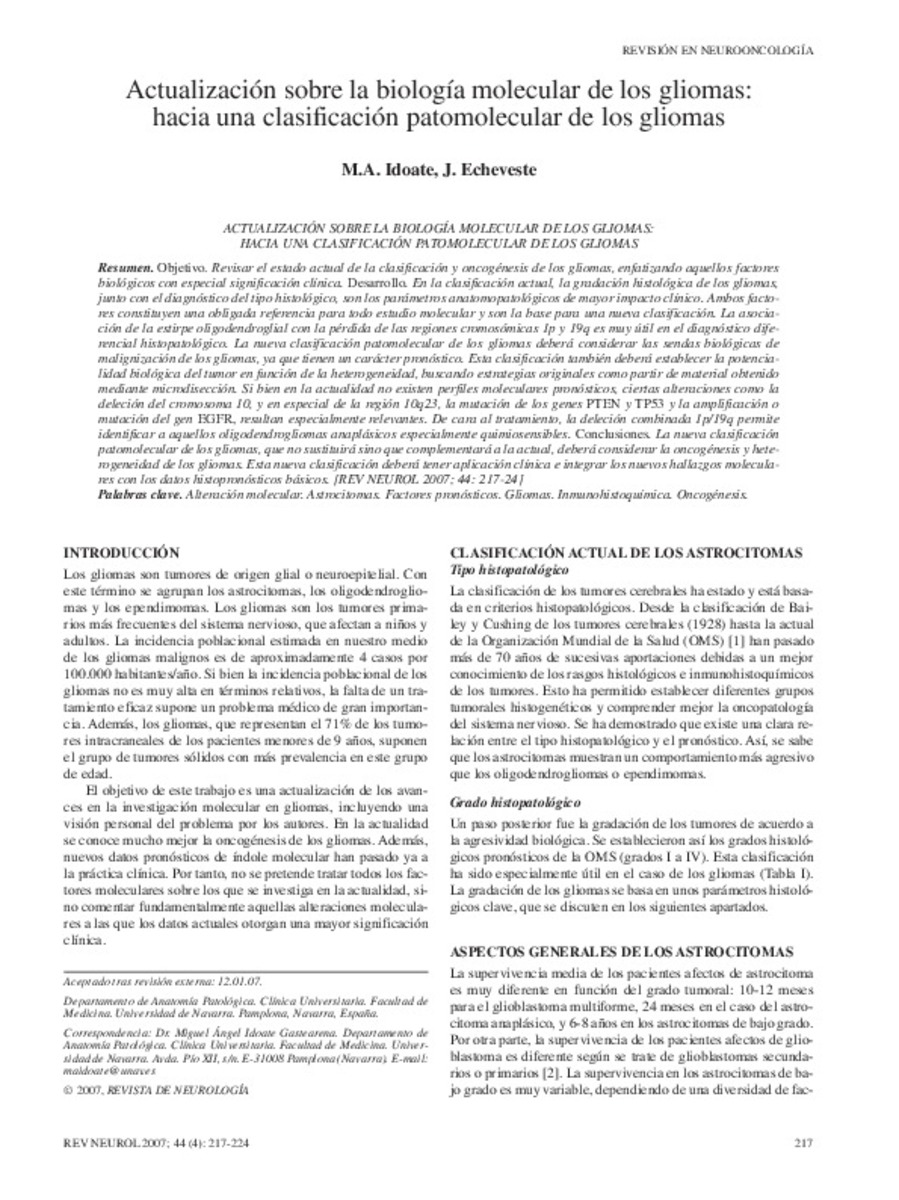Full metadata record
| DC Field | Value | Language |
|---|---|---|
| dc.creator | Idoate, M.A. (Miguel Ángel) | - |
| dc.creator | Echeveste, J.I. (José I.) | - |
| dc.date.accessioned | 2012-06-20T10:02:41Z | - |
| dc.date.available | 2012-06-20T10:02:41Z | - |
| dc.date.issued | 2007 | - |
| dc.identifier.citation | Idoate MA, Echeveste J. Actualización sobre la biología molecular de los gliomas: hacia una clasificación patomolecular de los gliomas. Rev Neurol 2007 Feb 16-28;44(4):217-224. | es_ES |
| dc.identifier.issn | 0210-0010 | - |
| dc.identifier.uri | https://hdl.handle.net/10171/22663 | - |
| dc.description.abstract | To review the current state of the classification and oncogenesis of gliomas, emphasizing those biologic parameters with special clinical significance. DEVELOPMENT: In the current classification, both histologic grade and phenotype are considered the pathological features with more relevant clinical impact. These factors are an obligatory reference for both all molecular studies and a new classification. The relationship between the oligodendroglial phenotype and the loss of chromosomes 1p and 19q is a useful data in the histopathologic differential diagnosis. The new pathologic-molecular classification should take into account the current state of knowledge about the malignization pathways of gliomas, which have prognostic significance. The neoplastic biological potential should be determined in each case according with the tumoral heterogeneity. Then, this evaluation can be based on tumoral microdissection. Although no well established prognostic molecular profiles are available, several molecular alterations are relevant such as chromosome 10 deletion, especially of the 10q23 region, mutation of PTEN and TP53 genes and amplification or mutation of EGFR. For treatment purposes, the combined deletion 1p/19q identifies the anaplastic type of oligodendrogliomas that are more responsive to chemotherapy. CONCLUSIONS: The new pathomolecular classification of gliomas should improve the old one, especially being concerned about the oncogenesis and heterogeneity of these tumors. It is desirable that this classification has clinical applicability and can integrate new molecular findings with some known histological features with prognostic value. | es_ES |
| dc.language.iso | spa | es_ES |
| dc.publisher | Viguera Editores | es_ES |
| dc.rights | info:eu-repo/semantics/openAccess | es_ES |
| dc.subject | Brain Neoplasms/classification/genetics/pathology/therapy | es_ES |
| dc.subject | Glioma/classification/genetics/pathology/therapy | es_ES |
| dc.subject | Tumor Markers, Biological | es_ES |
| dc.title | Actualización sobre la biología molecular de los gliomas: hacia una clasificación patomolecular de los gliomas | es_ES |
| dc.type | info:eu-repo/semantics/article | es_ES |
| dc.relation.publisherversion | http://www.neurologia.com/pdf/Web/4404/x040217.pdf | es_ES |
| dc.type.driver | info:eu-repo/semantics/article | es_ES |
Files in This Item:
Statistics and impact
Items in Dadun are protected by copyright, with all rights reserved, unless otherwise indicated.






